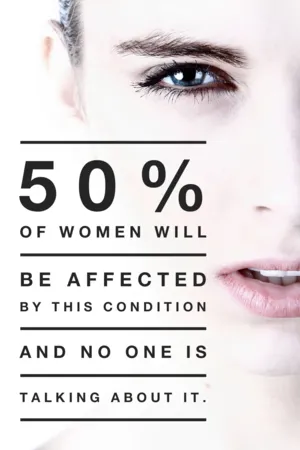Pelvic Organ Prolapse Affects almost 50% of all women in their lifetime. It can significantly adversely effect a person’s quality of life and the solution is often not as simple as a surgery. Now is the best time to learn what it is, who is at risk, how to prevent it, and what to do about it if you think you may have it.
What It Is
Pelvic organ prolapse is an incredibly common women’s health condition that has been on medical record for over 4000 years. However, it is often overlooked or not talked about. Women in every country around the world experience symptoms of POP yet have little idea what is occurring in their bodies because they are embarrassed to discuss them with anyone. It’s long past time to bring the awareness of this very common but not normal condition into the mainstream.
Pelvic organ prolapse (POP) can occur when the pelvic floor muscles weaken and one or more organs shift out of their normal positions into the vaginal canal. In advanced cases of POP, tissues push through the vaginal canal and bulge outside of the body. There are 5 types of POP; organs that can prolapse are the bladder (cystocele), intestines (enterocele), rectum (rectocele), uterus (uterine), and vagina (vaginal vault). There are 4 levels of severity; grade 1 is the mildest, grade 4 the most severe.
Symptoms
Symptoms can include and onset of pelvic pain, pressure in the pelvic floor area, a feeling of fullness or the sensation of a tampon coming out. It can make sexual intercourse uncomfortable or painful. Often, symptoms will be worse in the 2nd half of the day or evening due to the pull of gravity and being upright or on our feet for hours.
NOTE: many women who have a prolapse have no symptoms until it is severe. This is why we must be cautious after surgeries, having babies and not rushing to get back to running or jumping.
Who Is At Risk
Some of the main risks for pelvic organ prolapse include:
1. Pregnancy and childbirth
2, Hormonal changes
3. Straining with constipation
4. Inappropriate general exercise
5. Obesity
6. Pelvic surgery
7. Chronic coughing
8. History of Stress Urinary Incontinence
Prevention
Number 1 is to GET CHECKED by your women’s health physical therapist. They can identify risk factors and imbalances in your body that would make you more at risk, or identify any prolapse. As you look at the list of risk factors, some are obvious in what you can do. Maintain a healthy weight, and not chronically straining with bowel movements (managing constipation is important!!) are simple to understand, harder to conquer for some. Other factors like childbirth, hormone changes, chronic coughing due to illness and pelvic surgery are not as modifiable. Learning about how to safely progress exercise after childbirth and vaginal surgeries as well as general exercise guidelines is something a pelvic physical therapist is or should be well versed in.
Being smart with exercise takes some research. There is a large amount of internet information that will not be helpful and/or is not actually rooted in good research or pelvic floor knowledge base. There are definitely good and “bad” exercises when it comes to POP.
What To Do
If you have any symptoms or think you may have a POP, talk to your doctor. You can also go straight to your women’s health or pelvic PT in the state of Washington and most states for that matter without needing a referral. Plus, it can save you a lot of time and hassle. Your PT and doctor can work together to find solutions for you. This can include specific customized exercises for you, behavior modifications, possible pessary prescription (a small device inserted like a tampon to help maintain positioning of organs), or surgery. Even for women who need surgery, exercise is ALWAYS needed. The rate of surgical failures is quite high and women who have the surgery will still need to employ all of the behavior modifications and utilize exercises to rebalance their bodies to prevent relapse. Plus, these exercises usually result in improved bladder and bowel control as well!
Ok gals, lets start talking about this issue because chances are that you, your friend or family member already is dealing with this and may not know that there is help. There is! If only more people knew about this issue, the more women will be spared from feeling alone, helpless to change their symptoms and embarrassed to mention it to their doctor or therapist.





